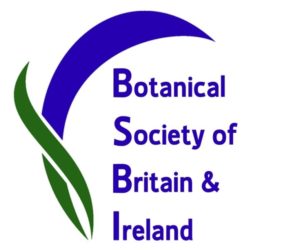Kirkcudbrightshire Botany Group, Benshinnie and Pattiesthorn High Loch, 5th October 2019
Will it, won’t it? Rain morning (BBC)? or afternoon (Accuweather)? or evening (ITV)? In the event it held off till we got back to the cars mid-afternoon. First a march along forest roads, stopping periodically to explore disused road stone quarries and exposed soils. Highlights here were several clumps of Lesser Clubmoss Selaginella selaginoides with its whitish sporangia, amongst one wet flushed area; several patches of the prostrate New Zealand Willowherb Epilobium brunnescens; a small stand of about 20 drying plants of Small Cudweed Filago minima; and one significantly sized stand of Glaucous Sedge Carex flacca on one quarry slope. What we also discovered was that forest roads on maps don’t necessarily reflect what’s currently on the ground – especially on our return route!
After a couple of attempts to find a track through the dense mature forestry to the first loch, we walked a further 1km before we found a way down to the second one, High Loch. The loch was surrounded by schwingmoor – a raft of floating vegetation overlying water, hence careful negotiation – edged by Common Reed Phragmites australis and bands of sedges which turned out to be Bottle Sedge Carex rostrata with light grey-green leaves, a fine-leaved and red-tipped sedge, and some stands of Water Horsetail Equisetum fluviatile. Interspersed throughout the floating vegetation there was Marsh Cinquefoil Potentilla palustris, Bogbean Menyanthes trifoliata and Marsh Violet Viola palustris. Ross did some grapnel work but only managed to dredge White Water-lily Nymphaea alba to land. Incidentally the only other true aquatic we found was Bog Pondweed Potamogeton polygonifolius, and that in track-side pools and ditches.
The surrounding flushed grassland and mire was of greater interest, providing a wide variety of both acid- and neutral- loving species. While we lunched here at the base of a band of Bracken Pteridium aquilinum, Max found a single flowering shoot of Grass-of-Parnassus Parnassia palustris.
Immediately after lunch we spent some time looking through the rest of this area – a few shoots of Common Valerian Valeriana officinalis, much more of Whorled Caraway Carum verticillatum, scattered Long-stalked Yellow-sedge Carex lepidocarpa, Glaucous Sedge C. flacca, Marsh Pennywort Hydrocotyle vulgaris, Fairy Flax Linum catharticum in seed, abundant Eyebright Euphrasia spp.,seeding stalks, the opposite-leaved and creeping stems of Bog Pimpernel Anagallis tenella, all indicative of nutrient rich and fairly neutral ground. And throughout this area copious Fen Bedstraw Galium uliginosum, with the pointed leaf tips (as opposed to the rounded leaf tips of Marsh Bedstraw G. palustre). Some other areas held acidophile species – Cranberry Vaccinium oxycoccus, some Common Yellow-sedge Carex demissa, bog-mosses Sphagnum spp., Cross-leaved Heath Erica tetralix, scattered clumps of Deergrass Trichophorum germanicum and Hare’s-tail Cotton-grass Eriophorum vaginatum, and eventually both louseworts, common Lousewort Pedicularis sylvatica and the taller, more branched Marsh Lousewort P. palustris. Here Michael found a beautiful primary feather from a Barn Owl Tyto alba, obviously only recently shed. The loch itself supported a dozen or so Mallard Anas platyrhynchos and a couple of Teal Anas crecca – the lower loch obviously had far more ducks but a shooting group soon put those to flight. Hence also another reason not to go down to this one……
Then back to the cars, but not before taking a wrong turn somewhere and ending up on the road about 2km from the cars. However this turned out to be somewhat rewarding as at a bridge over a small burn there was a thriving patch of Bear’s-breech Acanthus mollis – the first county record – Soapwort Saponaria officinalis and a Bridewort Spiraea sp. Obviously all discards from a garden somewhere some time ago. As we neared the cars, the light rain started – good timing on our part.
In all we had 135 species in monads NX7172 and 7173, plus a further 4 outwith these (NX7273). Of these, apart form the first county record mentioned above, we managed to relocate 12 species not recorded since the previous survey period (1987-1999).
Thanks to those who joined the day’s outing and helped locate many species – 6 pairs of eyes are far better than one pair.
And that’s that for this field meeting season, I’ll produce a summary in due course and ask for ideas for next year when there’ll be less emphasis on recording – unless you want it that way.
David Hawker
BSBI county recorder for Kirkcudbrightshire VC73

